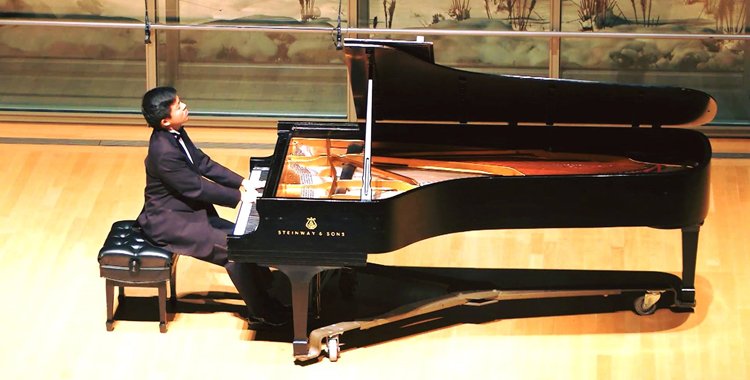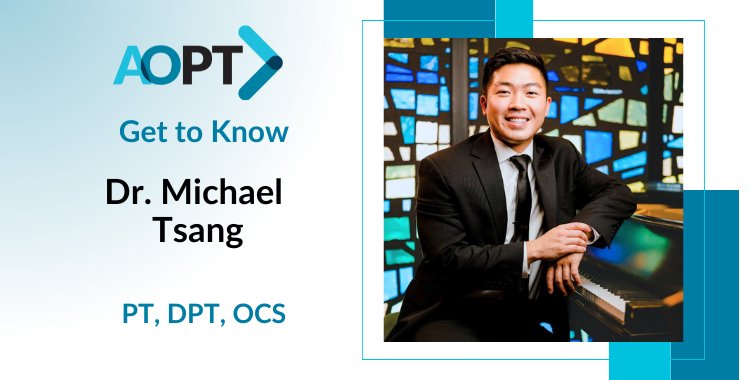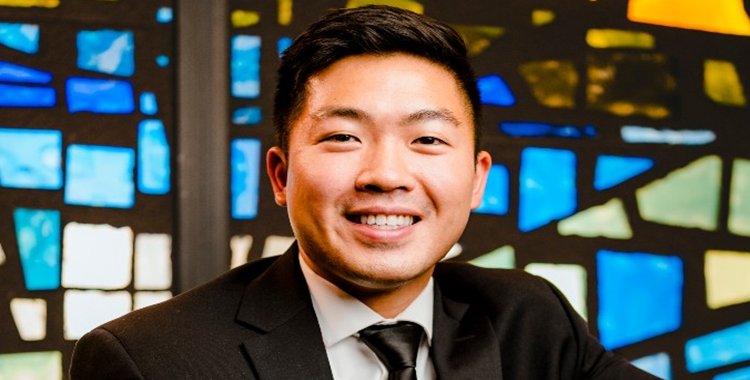Meet Dr. Michael Tsang



The PASIG would like to spotlight Dr. Michael Tsang, PT, DPT, OCS.
Michael is a Board-Certified Clinical Specialist in Orthopaedic Physical Therapy at Memorial Hermann Sports Medicine & Rehabilitation in Houston, TX. He is a site coordinator and faculty member for the Memorial Hermann Orthopedic and Sports Residency programs. In addition to treating all orthopaedic and sports populations, Michael also specializes in treating playing-related injuries in musicians. He currently serves as the Research Committee Chair for the Academy of Orthopaedic Physical Therapy Performing Arts Special Interest Group. Michael graduated from the Cleveland Institute of Music in 2016 with Bachelor and Master of Music degrees in Piano Performance. Michael also graduated from Case Western Reserve University in 2016 earning his Bachelor of Arts degree in Biological Sciences. He went on to earn his Doctor of Physical Therapy degree at Washington University in St. Louis School of Medicine in 2019. Michael completed his orthopaedic residency at UPMC Rooney/Freddie Fu Sports Medicine Center. He was an adjunct faculty member at the University of Pittsburgh Department of Physical Therapy for their musculoskeletal curriculum.
Over the course of his physical therapy career, Michael created music medicine initiatives and injury management/prevention seminars for both healthcare professionals and musicians. He has presented on performing arts topics related to optimizing performance, rehabilitation management, and return-to-play considerations at national conferences including the American of Physical Therapy Association’s Combined Sections Meeting in 2022 and 2024. Michael provides education sessions and workshops for youth orchestras, universities, and professional music institutions. He has lectured on performance health and injury prevention strategies at the Cleveland Institute of Music, Rice University, Pittsburgh Symphony Orchestra, Carnegie Mellon University, Duquesne University, Pittsburgh Youth Symphony Orchestra, and Montclair Orchestra. Michael was also a keynote speaker for the 2024 Performing Arts Research Symposium at Shenandoah University. Michael’s ultimate goal is spreading awareness of playing-related injuries, managing and preventing these injuries through optimizing performance, and helping performing artists return to the stage and their passion without limitations.
Why I became a Performing Arts Physical Therapist:
During my time as an undergraduate and graduate student at a music institution, I became interested in performing arts and musicians’ injuries after witnessing many of my colleagues and faculty struggle with performance-related injuries. Performing artists associate their sense of self with personal injuries. These experiences motivated me to become a healthcare provider who can help people continue pursuing their passions without being hindered by physical impairments. The performing arts is a field in which physical injuries are often overlooked and ignored, and my musical and professional goals only reaffirmed my desire to become a performing arts physical therapist.
Performing artists, like many other traditional athletes, are susceptible to overuse musculoskeletal and neuromuscular injuries due to many hours of repetitive movement. I observed a wide spectrum of physical health, ranging from the devastating effects of injuries to the wonders of successful rehabilitation. When a musician or dancer is pursuing a career in the performing arts, the daily activities in their life are focused around their instrument or the stage. When pain and injuries affect the ability of performing artists to do what they love, these ailments rob them of their expressive identity and significantly affect their overall well-being.
However, I had seen the great influence that physical therapy has on the performing arts community. I desired to be at the center of making an impactful contribution to helping patients perform at their best without limitations. One of the most difficult things to do as a clinician is directly relating to our patients. The ability to positively change a performing artist’s health and movement patterns without impeding their artistic performance is challenging to balance. Not only did I want to connect with performing artists as a healthcare provider, but also relate to this unique population from an artistic perspective and prevent recurring injuries by optimizing their performance. I wanted to use my performing arts background and education to bridge the gap for this specialized area of the profession where awareness and expertise is needed. With such a diverse community, I remind myself that I am in a great position as a physical therapist to provide compassionate care for each one of our performing artists to maximize their musculoskeletal health and wellness potential.
Fun Facts:
My wife and I live in Katy, Texas, where we enjoy exploring new restaurants around Houston and traveling/hiking with our dog, Henry! I am a Pittsburgh “yinzer” for life: Go Steelers and Penguins! I also enjoy relaxing by the pool and playing pickleball, basketball, and golf.
